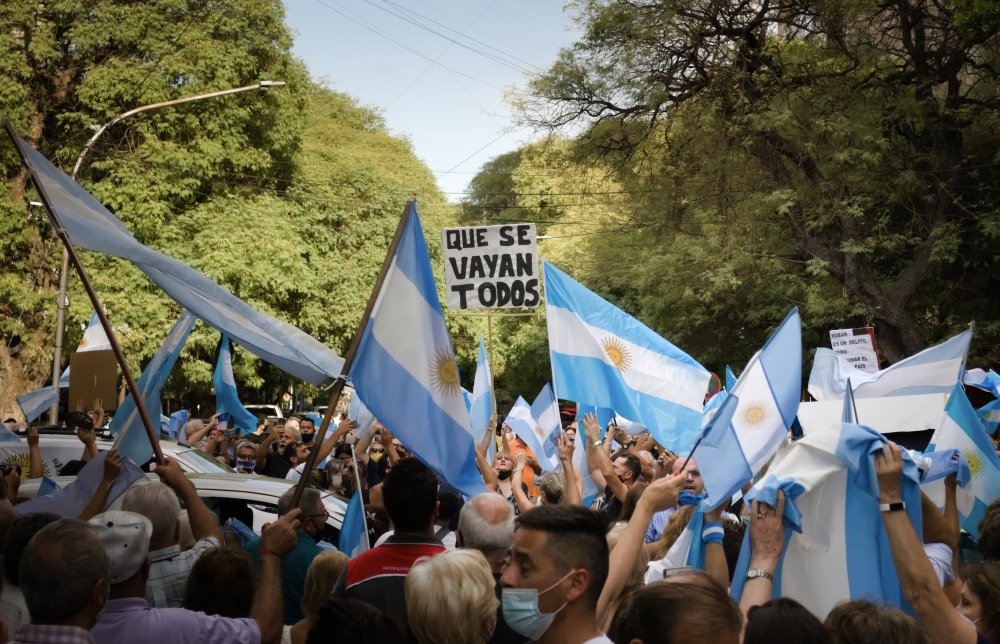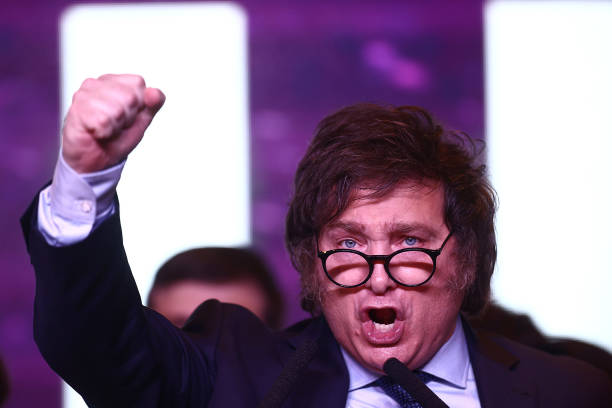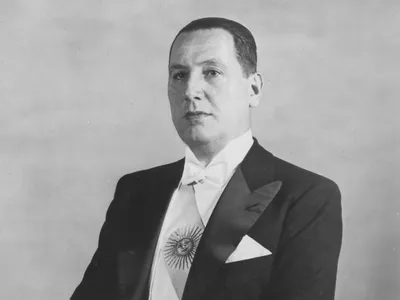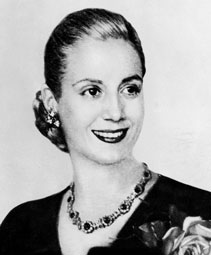
Politics
Latest News

On November 19, 2023, Javier Milei wins the run-off vote against Sergio Massa and becomes Argentina’s new president. He is a self-proclaimed anarcho-capitalist and admirer of former U.S. President Donald Trump, is the anti-establishment candidate, who represents yet another pendulum swing to the rightist extreme. His radical proposals include slashing public spending, reducing government ministries by half, abolishing the central bank, and adopting the U.S. dollar as the national currency. He portrays himself as a crusader against domestic and international socialism and vows to reshape Argentine culture.
Background
Argentina is considered one of Latin America’s most stable democracies. Unfortunately, it’s populace keeps electing inept and corrupt leaders.
At the turn of the last century, Argentina was ranked as the third largest economy in the world – a plausible position for a country that is top 8 in terms of arable land, has extensive gold, silver and copper deposits and, most relevant currently, contains the world’s third largest lithium reserves. Additionally, Argentina has a relatively well-educated, homogeneous population and has never experienced any significant racial, religious or ethnic conflicts. Argentina’s current problems, reflected in the 140% per year inflation rate, rapidly depreciating currency, consistently falling real GDP rates and a position as 94 out of 180 countries on the World Corruption Perception Index (CPI) (with 1 being least corrupt, note, Russia is ranked 127), can be squarely placed on the shoulders of poor governance.
Many link Argentina’s economic decline to the election of populist leader Juan Peron in 1946, who ushered in centralized government planning, extensive regulation, state intervention in many walks of life and limited opposition. His wife, Evita Peron, remains an iconic figure in Argentina.

Juan Peron

Eva Peron
In short, Peron set Argentina on a course of inflation, corporatism and organized corruption. Since that time, Argentina has oscillated between populist, left-of-center governments and rightest regimes, with the most extreme being the military Junta that ruled the country from 1976-1983.
Since the election of Nestor Kirchner in 2003, the country swung back to its Peronist roots, implementing multiple socialist-populist economic policies that have led to the current economic malaise, with 2 out of 5 Argentines now living in poverty. Some have suggested that Argentina is en route to become the next Venezuela.
Given this environment, the Oct, 2023 election, which pitted Sergio Massa, the current Economic Minister of the Kirchnerista Regime against Javier Milei, a right-wing populist, was a highly polarized affair.
Political System
Type of State
Argentina is a federal representative democratic republic.
Structure of Government
- President: Elected through universal suffrage for a four-year term, with the possibility of re-election for one consecutive term. The Vice President is elected alongside the President. The President appoints individuals to the Council of Ministers.
- Election Process: A candidate must receive 45% of the vote or 40% with a 10-point difference from the runner-up to win outright. Otherwise, a runoff election occurs.
- Legislature: The National Congress comprises the Chamber of Deputies (257 members, elected for four-year terms, with half renewed every two years) and the Senate (72 members, elected for six-year terms, with one-third renewed every two years).
Balance of Powers
- Executive: The President serves as both the Head of the Government and the Chief of State, responsible for the general administration of the country. The President appoints individuals to the Council of Ministers.
- Legislative: The National Congress (bicameral) enacts laws. The Chamber of Deputies and the Senate make up the legislature, representing the people and provinces, respectively.
- Judicial: An independent judiciary interprets laws and ensures their constitutionality. The Supreme Court of Argentina is the highest judicial authority.
Relationship Between Central Government and the Provinces
- Federal System: Argentina is a federal republic, meaning it has a central government and individual provinces, each with its own government and legislature. Argentina comprises 23 provinces and one autonomous federal district each retaining certain powers not belonging to the federal government, such as education and public health.
- Governors: Each province elects its governor, legislature, and other local officials. Governors have authority over provincial matters, although they must comply with national laws and the federal constitution.
- Decentralization: The provinces have varying degrees of autonomy, allowing them to manage certain affairs independently. However, the central government maintains control over areas like national defense and foreign affairs.
Argentina’s government structure reflects a federal democracy, where power is shared between the central administration and its provinces, fostering a balance of powers and regional autonomy.
Useful Resources
Track the latest political developments:
- Spanish language newspaper: La Nación
- English language newspapers: Buenos Aires Times or Buenos Aires Herald